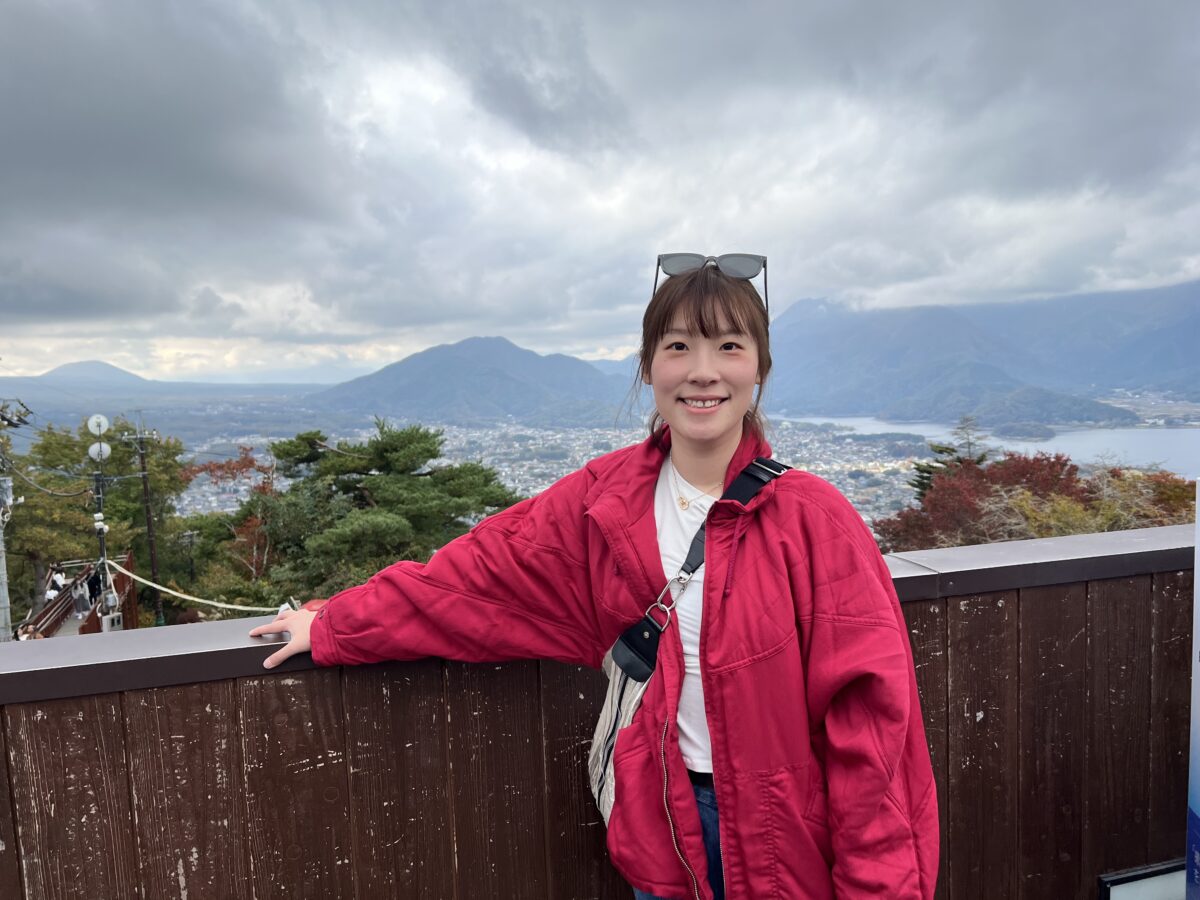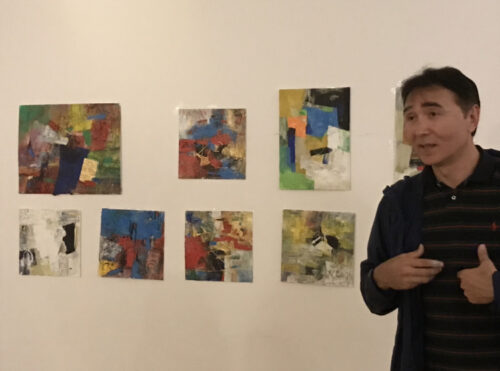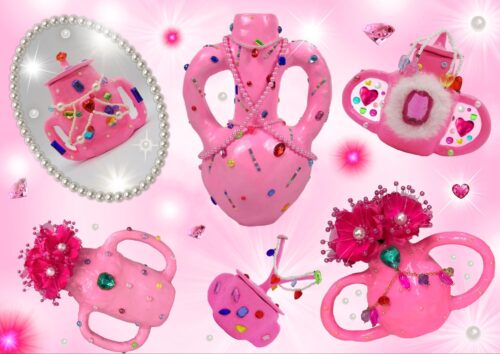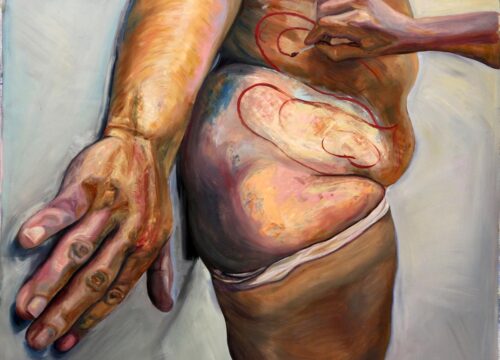
In “De-Ink,” a new solo exhibition in New York City by Chinese abstract ink brush painter Lan Zhenghui, the renowned artist’s trademark bold strokes and a grayscale palette reflect his internal struggles making art in exile during the pandemic.
Renowned worldwide as one of China’s leading contemporary artists, Lán Zhènghuī 蓝正辉 first came to public attention in the late 1980s with a series of monumental, large-scale abstract ink paintings that marry Chinese calligraphy’s freehand strokes with the structure and expression of modern painting. Using varying densities of ink, and sometimes splashing directly onto the paper, Lan produces marks that carry an overwhelming amount of visual weight, and convey a wide range of complex emotions through the artist’s raw individualism
With his innovative marriage of the traditional and contemporary, Lan’s artwork has simultaneously captured the Chinese mind while appealing to the Western audiences. He was awarded the prestigious Ontario Art Council Grants to Visual Artist in 2006, which was followed by a solo exhibition at the National Art Museum of China in Beijing. He was a featured artist at the Toronto Expo in 2010, where his 10-meter high ink painting received critical acclaim.
China news, weekly.
Sign up for The China Project’s weekly newsletter, our free roundup of the most important China stories.
Crossing Art in New York City is currently hosting the solo exhibition “De-Ink” by Lan, which will run through November 2. Serving as his response to the sudden huge changes in the world in the last few years, the series on display explores Lan’s “thoughts and reflections on the society as he observed its unprecedented change.”
We spoke with the New York-based artist about the paintings in the exhibition that he created between 2019 and 2022, about how he sees himself as a Chinese artist living overseas, and more.
This interview was originally conducted in Chinese, and has been condensed and edited for clarity.

How did you first get interested in art and how were you exposed to abstract ink painting?
I was born in 1959 in Sichuan Province, where I spent my childhood and teenage years. Although the village I grew up in was charming and my parents held respected jobs at the local government, I always dreamed of going to bigger cities. For college, I first went to a school in Northeastern China to study engineering. When I was there, I went to see an exhibition organized by some art students and I was mesmerized by how beautiful their creations were. After that, I became involved in all sorts of art-related activities in my college, from designing school newspapers to bulletin boards.
I got a job in Chengdu after I graduated, but still wanted to change course and switch direction toward art. In 1983, I got accepted into Sichuan Fine Arts Institute, where I obtained my degree in visual design. Later, I was offered a teaching position in Chongqing University, where I helped lay the foundation for its industrial design program. It was also around that time that I started translating my passion for and applying my knowledge about composition into ink brush painting. It was also the most economically sensible choice for me because ink was so cheap.
As soon as I started creating art, I established three principles for myself: First, never repeat what I’ve done before; Secondly, my paintings should be visually pleasing; Third, everything should be simple.
A few years later, I left Chongqing University because I didn’t feel my creativity was appreciated in a bureaucratic environment. I moved to Guangzhou, doing business while drawing with ink on the side.
Where and when did you make the series of paintings in your new solo show at Crossing Art?
I’ve been in the U.S. for about four years. My original plan was to travel regularly between China and the U.S., but the pandemic changed everything. During my years in China, I had many giant studios for me to create and store my work. But the local government kept dismantling them in recent years, citing reasons like “illegal building,” which made me decide to leave the country eventually.
Now I’m in the U.S., I am limited in resources. For a long time, I could only work in my basement or garage, which doesn’t have enough space for me to create extra large paintings. To make things worse, everything here is so expensive, from labor to supplies. I also struggle with my English, which just makes my life here more difficult.
Luckily, a friend of mine offered me a space to paint for free. Most works on display here were created in that studio. Given that this is my first solo exhibition in the U.S., I really wanted to show some large paintings to impress people. I know that there are plenty of people here trying to make it in the art scene and it’s really difficult for me to find my position. I feel like all the accomplishments I’ve achieved in China are of no importance here. I have to start from scratch.

What inspired these works? What do you hope they evoke in the viewer?
The Chinese title of this exhibition is “Surround/Express.” From my understanding, Chinese traditional painting has an emphasis on self-expression, whereas Western painting is heavily influenced by the artists’ surroundings and serves as a way for them to understand the world. My goal with this series of works is to combine these two methodologies together and create something new, something in between.
As you can see, many of the paintings displayed here are composed in a way that makes you feel like you are trapped in something. They are a reflection of my state of mind in the past few years, where I was homebound because of the pandemic. We’ve been bombarded with bad news constantly, from natural disasters to geopolitical conflicts. These negative forces are portrayed in ink on my canvas, and the bright spots represent our own strength and desire to survive.
How did this exhibition come into being?
Earlier this year, a friend of mine introduced me to the owner of this gallery and we immediately clicked. The exhibition space here is actually too small for some of my works but I was willing to compromise because of the gallery’s great location, right at the heart of Chelsea. It took roughly two months for us to put together this exhibition.
You’ve worked with dozens of brands, creating artwork for them in advertising campaigns. What is the most memorable collaboration you’ve done? How do you see the relationship between art and commercialization?
There was a time when international brands were eager to collaborate with Chinese artists, and many of them found my works to possess this balance between Chinese culture and global appeal.
Many people have asked me if these projects have made me too “commercialized” and lose my artistic integrity. But contrary to popular assumption, these brands actually never made specific requirements about what I produced for them. One time Mercedes-Benz asked me to create something illustrating Shanghai’s skyline, I told them I couldn’t do it and they respected my decision.

There’s this new movement in the world of Chinese art, where millennials and Gen-Zers are thinking more globally and tend not to use Chinese motifs in their creations. What do you think of it? What makes a piece of art “Chinese” in your opinion?
Nowadays, many young Chinese artists who engage in contemporary art often say that they want to break the tradition and start over. They want to create something on their own, something that has nothing to do with our predecessors. In my opinion, it’s a superficial point of view. The best way to do this is to utilize Chinese elements or symbols in a smart way and take advantage of the foundation laid by pioneers.
Take myself as an example. The creativity contained in my drawings derives from my transformation of traditional Chinese calligraphy techniques, which I adapt by coating my brushes with unusually weighty quantities of ink, thus turning what is traditionally a fine-line practice into one of heavy, bold strokes. In a sense, I broke the tradition of Chinese ink calligraphy, which prides itself on precision and slender tranquility, and my work is all about energy and dynamism.
What’s the future of your art?
“Mr. Lan, have you explored some new possibilities lately?” This is a question I get asked a lot. Actually, I’ve dabbled in other forms of art and techniques over the years, like knitting, three-dimensional painting, and using more colors. But I’m reluctant to show these works to the public because they look amateurish compared to what I’m known for and what I’m actually good at.
I’ve also been told that my works are too antiquated and repetitive. But if you look carefully, each of my drawings is different. To those who think that every painting of mine is the same, I would say that this is their problem. It’s not like I’m against innovation or venturing out to other realms of art, but I just feel like there’s so much left to do in my field. I was actually among the first generation of Chinese artists who had access to video cameras but I never felt compelled to make multimedia a huge part of my work. We artists need to find our unique positions in this world. I’m here to keep the tradition alive and there are people who excel at pushing the boundary of art.






